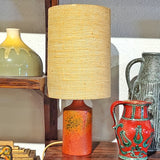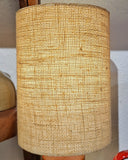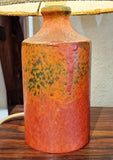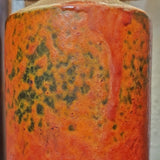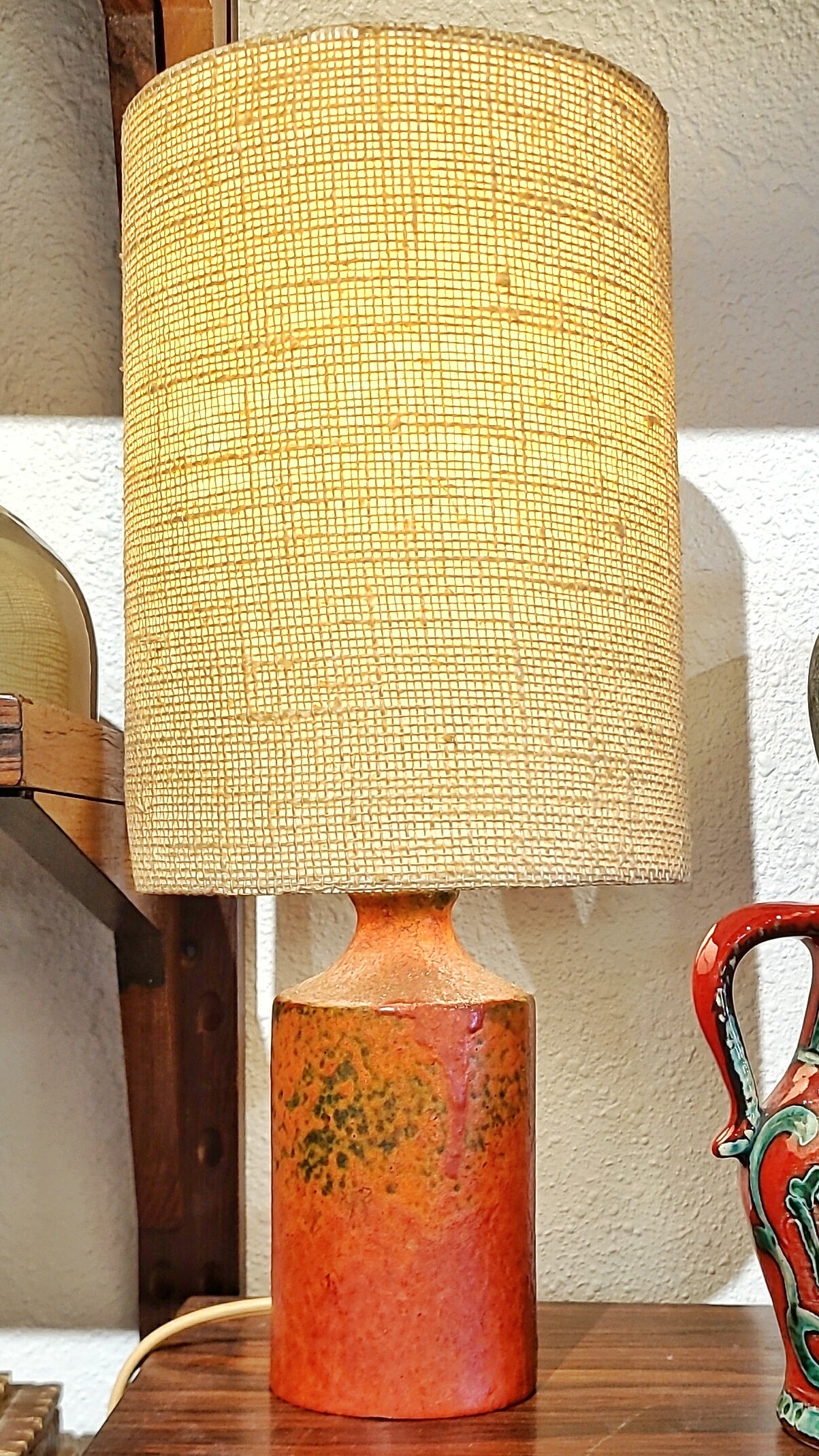
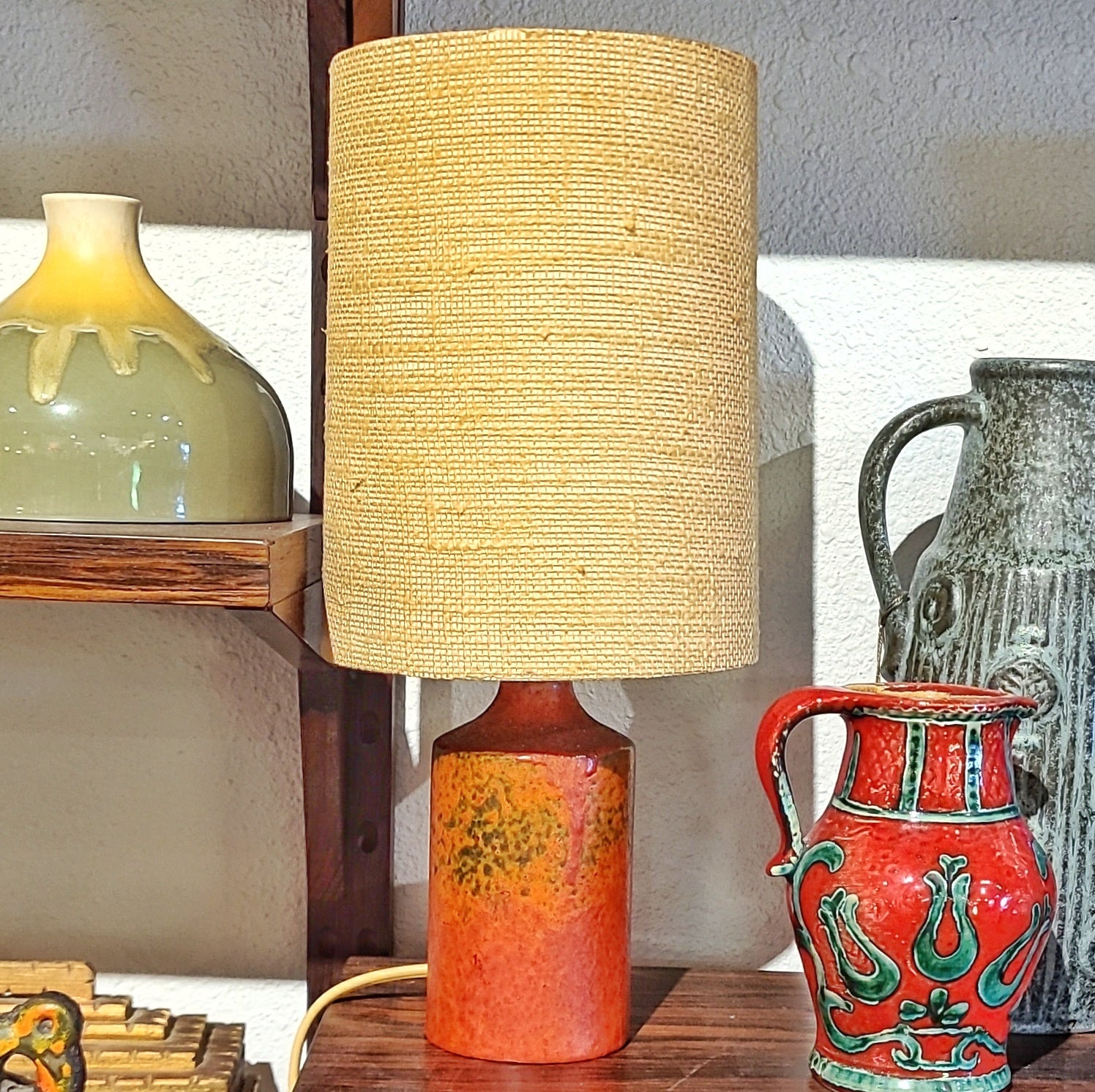
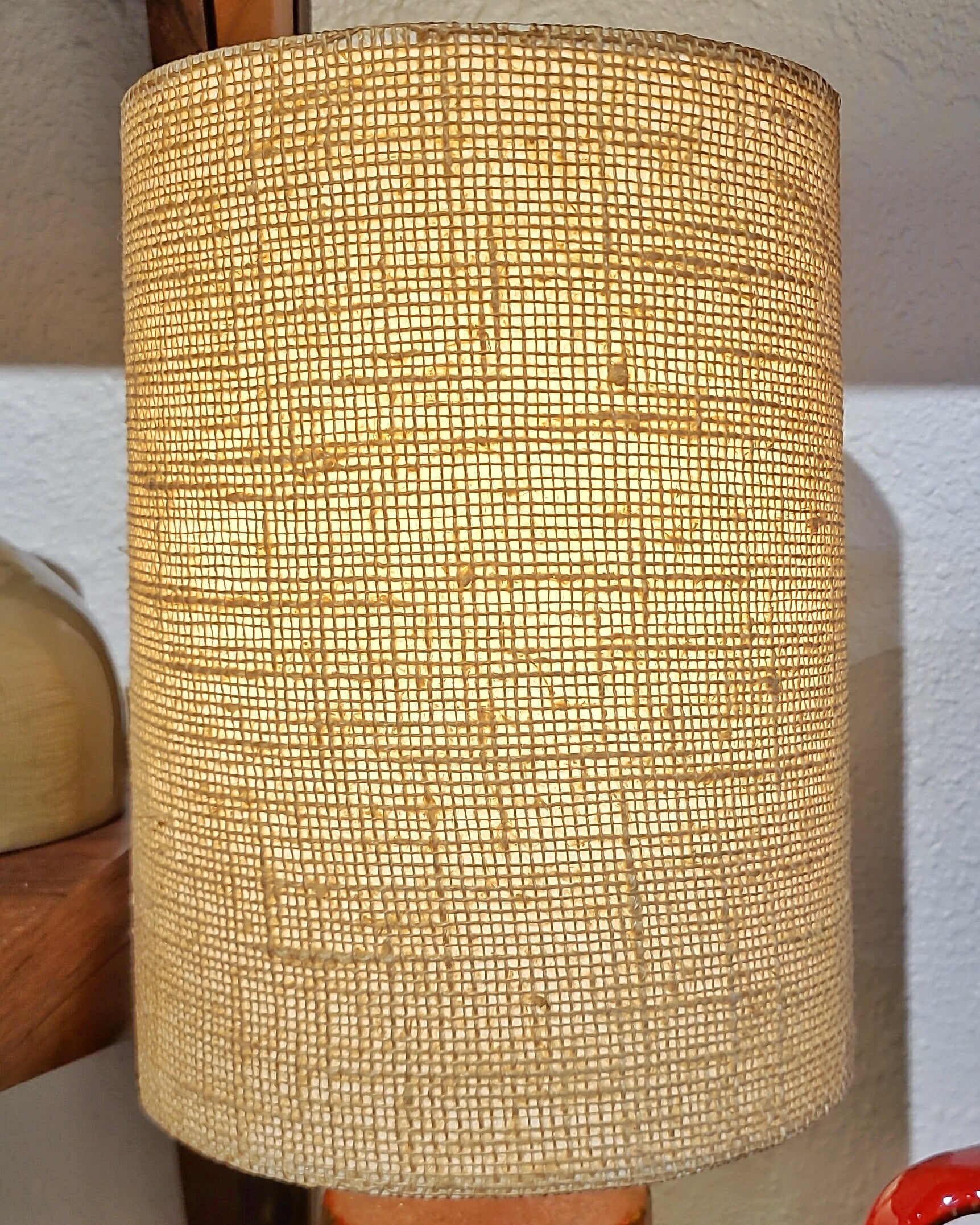
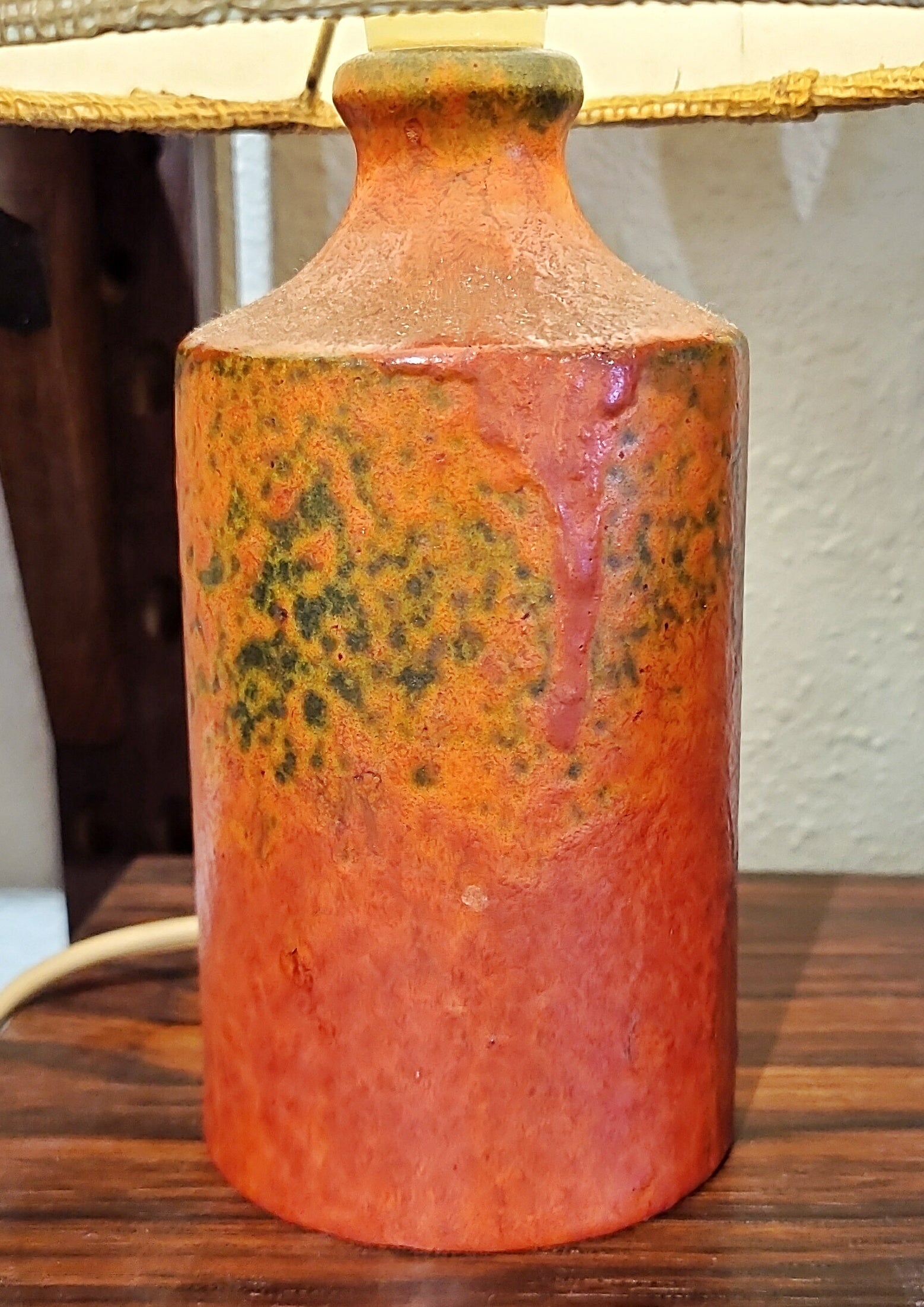
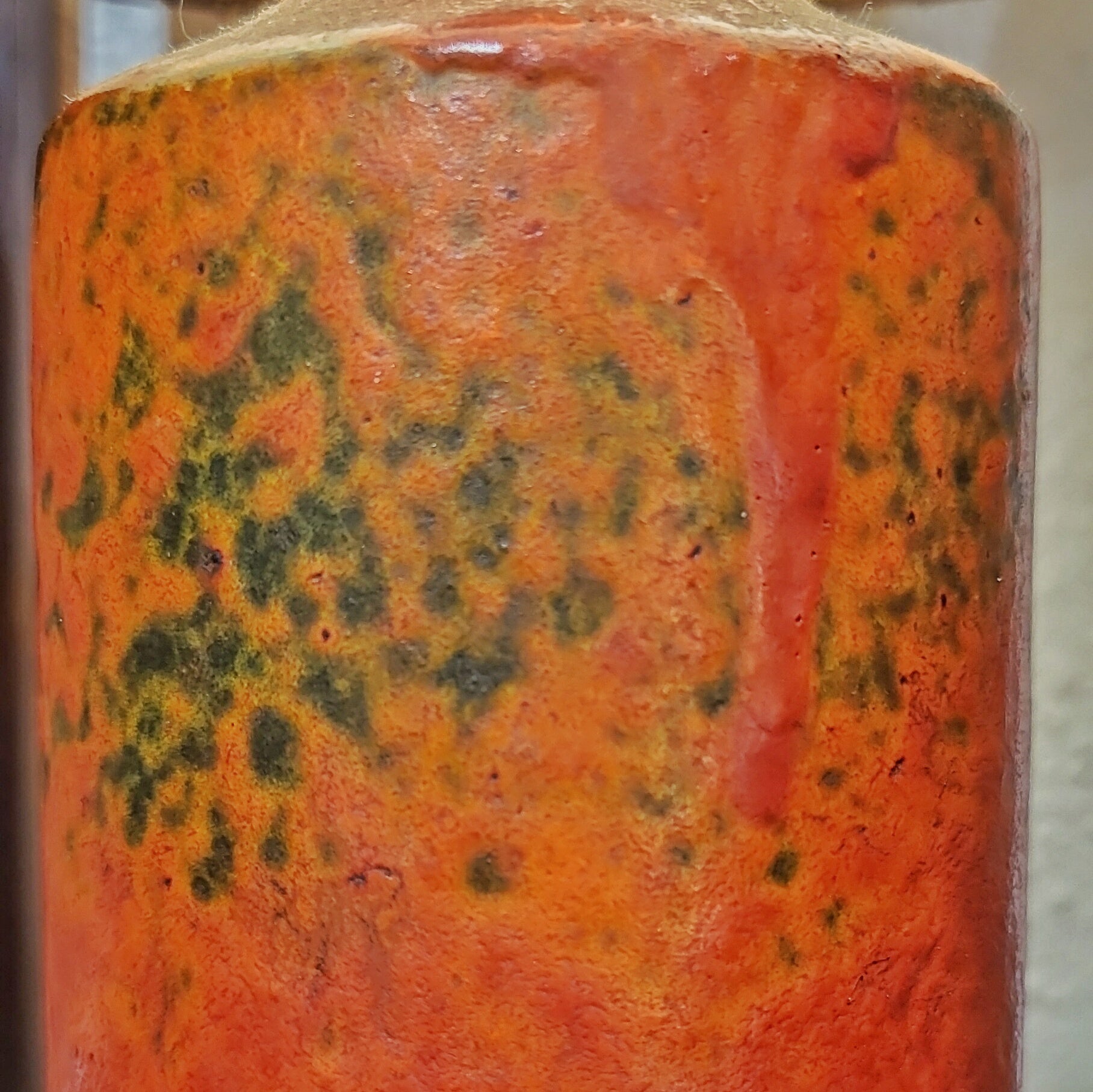
RARE ‘VULCANO’ ACCENT LAMP BY OTTO GERHARZ FOR RUSCHA
CONTACT US HERE ABOUT THIS ITEM.
A rare vintage accent lamp by Kurt Tschörner (form) and Otto Gerharz (glaze) for RUSCHA KERAMIK, decorated in the pioneering fat-lava décor, Vulcano.
Fitted with a European plug; US adapter included. 13" to the top of the shade.
RUSCHA KERAMIK was launched in 1948 when Rudolf Schardt assumed management of Klein & Schardt, his father Georg's ceramics factory in Rheinbach—a small town southeast of Bonn in the German state of North Rhine-Westphalia, with a long tradition of earthenware pottery. (RUSCHA is a syllabic abbreviation of the name Rudolf Schardt.) The timing of the takeover put Schardt in a good position to take advantage of West Germany's post-war boom, and RUSCHA KERAMIK would become one of the leading lights of the "golden age" of German ceramics.
RUSCHA is credited with some of the era's key developments. It produced some very successful and innovative forms and finishes, including the iconic model Nr. 313 (Kurt Tschörner, 1954)—probably the period's most famous shape—and the Vulcano décor (Otto Gerharz, 1951)—which anticipated by decades the move toward thick, dripping fat-lava glazes.
As well as high-quality vases, RUSCHA is celebrated for exquisite wall plates, plaques, and tiles—manufactured for both indoor and outdoor applications. Specimens from the '70s often exhibit remarkable volcanic and "fat lava" glazes. When RUSCHA shuttered its factory in 1996, Scheurich Keramik acquired many of its designs and molds; distinctive silver RUSCHA labels were sometimes applied to the subsequent production.
Notes on identification: RUSCHA KERAMIK used white clay almost exclusively. Rare examples made with red-brown clay are thought to date from periods when normal supply sources ran out. Vessels are typically embossed or incised with form numbers on their bases. If a model was available in more than one size, a single digit indicating relative size follows the form number (separated by dash or virgule). Lower form numbers (< 100) are occasionally preceded by a letter. Along with a handful of other manufacturers, RUSCHA would sometimes recycle model numbers—a cause of distress for some collectors.
KEY DESIGNERS:
- Otto Gerharz
- Kurt Tschörner
- Hanns Welling
- Adele Bolz
- Heinz Siery
- Cilli Wörsdörfer
KURT TSCHÖRNER (1912—1987) is probably best known for the ceramic forms he designed for RUSCHA KERAMIK, particularly the iconic jug vase Nr. 313 (1954)—considered to be among the very best shapes to have emerged from the post-war German ceramics industry. When RUSCHA's arts director Otto Gerharz left to form his own company, Otto-Keramik, Tschörner went with him. He and Gerharz were responsible for all of the forms and glazes for the new firm well into the 1980s.
OTTO GERHARZ (b. 1927) began training as a ceramicist in 1942, but his apprenticeship was interrupted in 1944 when he was drafted into the military. He emerged from service in 1946 with his interest in ceramics intact, but his focus had shifted away from pottery making toward glaze chemistry. He began attending classes at the technical school at Höhr-Grenzhausen, which had just reopened after the war. Two years later, he completed his thesis on ceramic glazes as an engineer. Gerharz continued his education with complementary studies in electro-ceramics, followed by laboratory and consultancy work in the industry.
In 1951 Gerharz went to work at RUSCHA KERAMIK as operations manager and lead ceramist. There he developed a wide range of glazes and played a decisive role in the emergence of RUSCHA as an important manufacturer of art pottery. He left RUSCHA in 1964 to resume his independent research, forming the eponymous Otto-Keramik.
DETAILS
Maker – RUSCHA KERAMIK
Production Period/Year – 1970s
Designer – OTTO GERHARZ
Design Period/Year – 1970s
Origin – WEST GERMANY
Styles/Movements – MID-CENTURY MODERN
Materials – CERAMIC, FABRIC
Colors – RED, DARK GREEN, GOLDENROD
Power – UP TO 250V (EUROPE/UK STANDARD), CORDED, TYPE "C" PLUG
Condition – Excellent Vintage Condition. Minor wear consistent with age and use.
Dimensions – 5 ¾" DIAM. × 13" H


